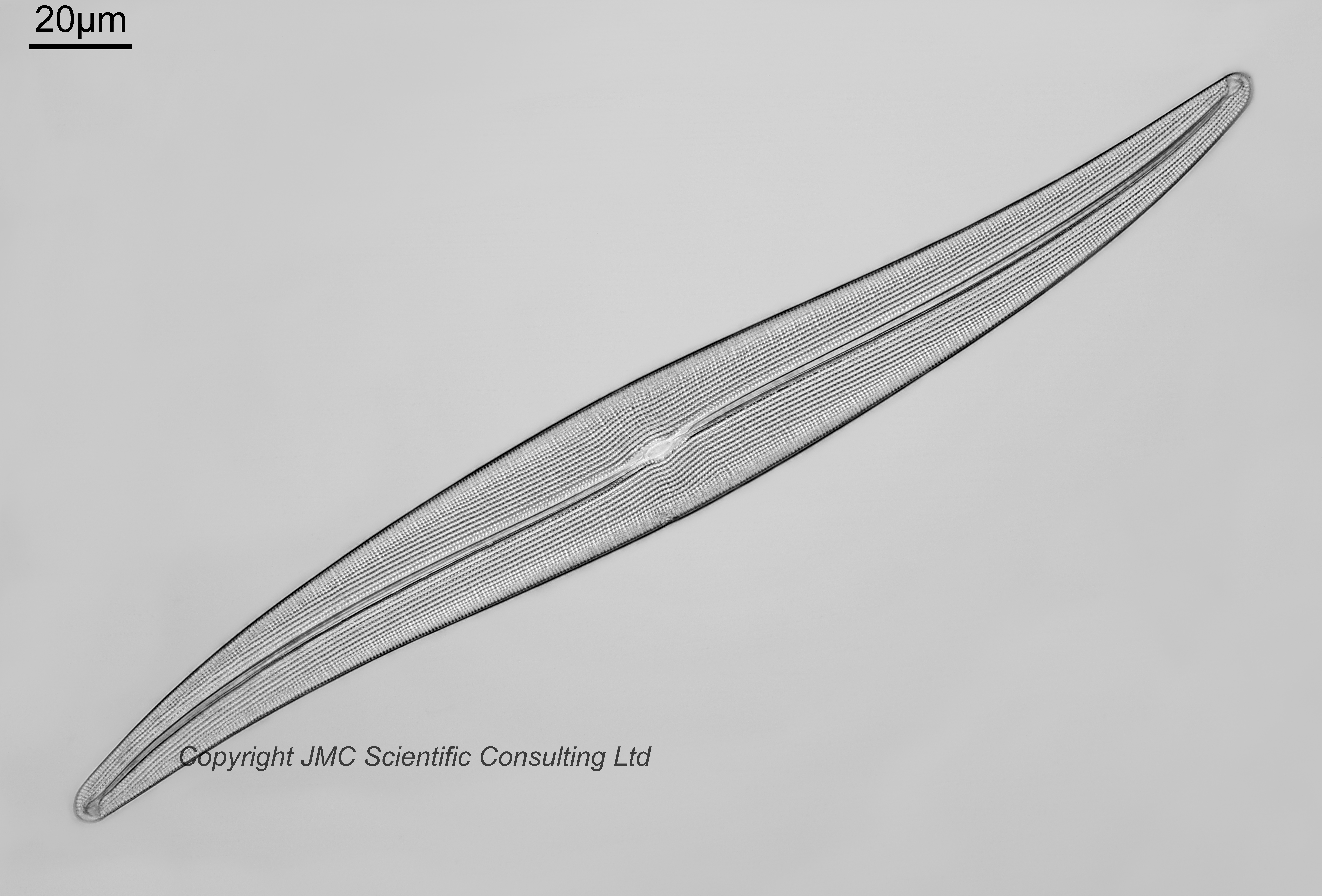
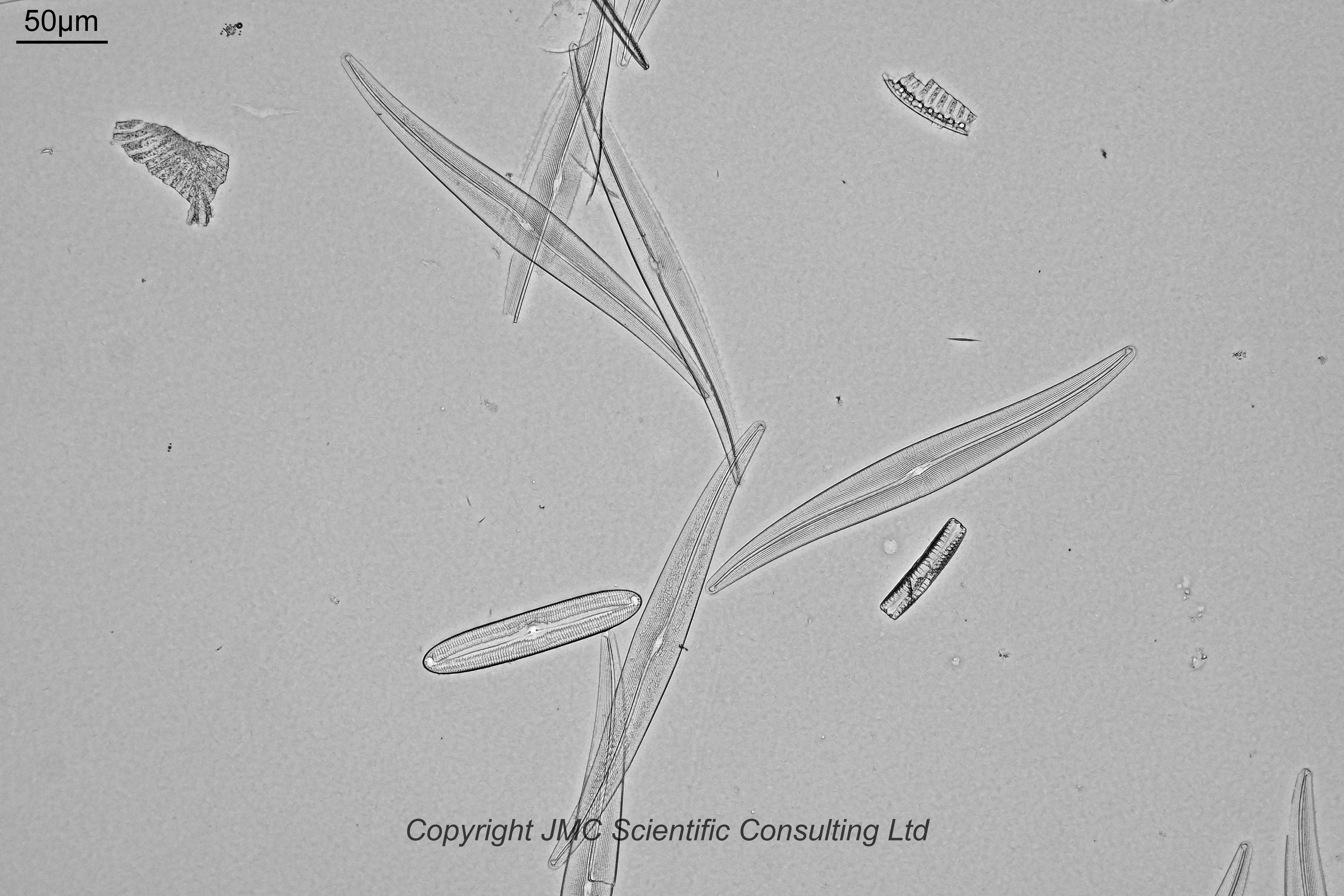
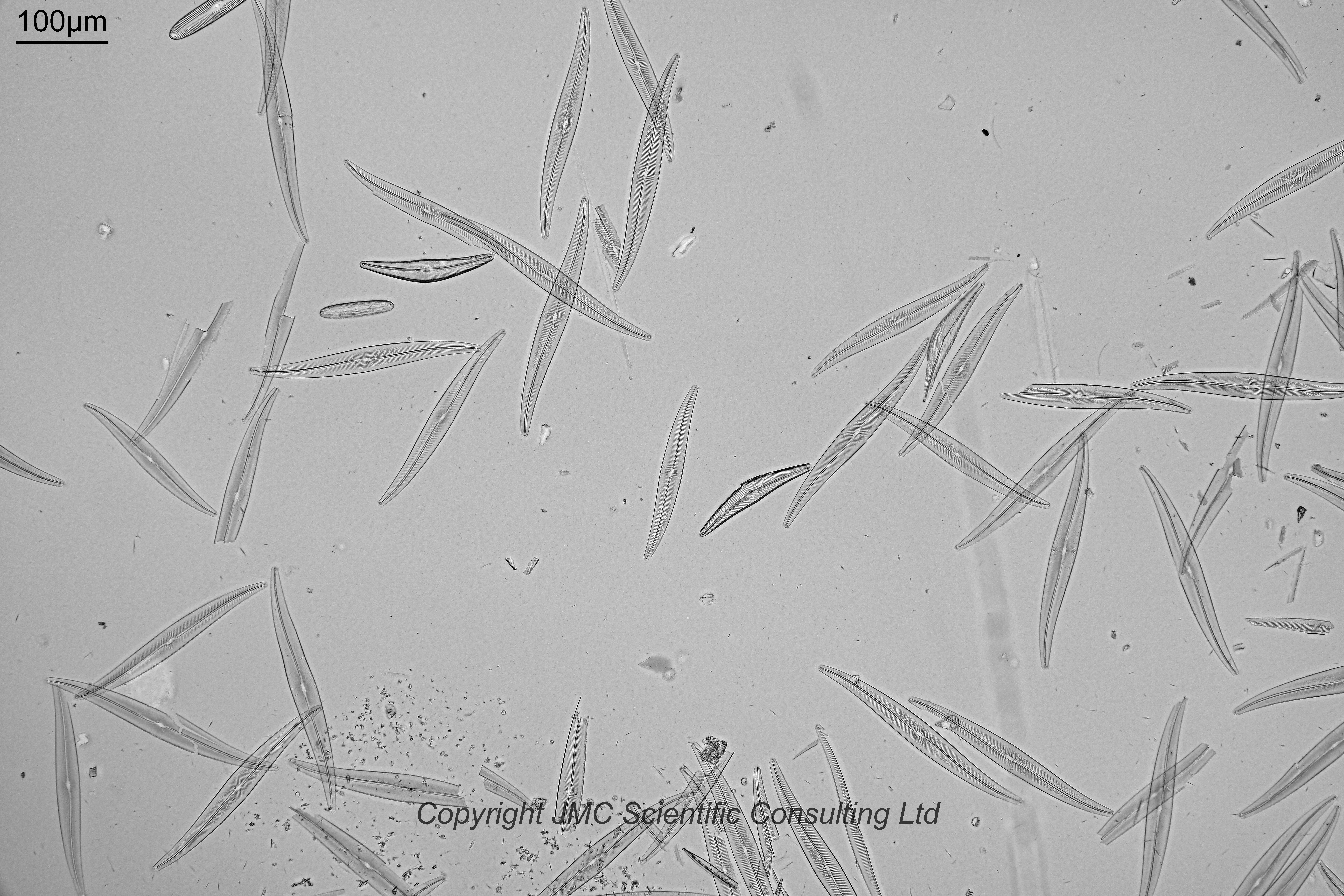
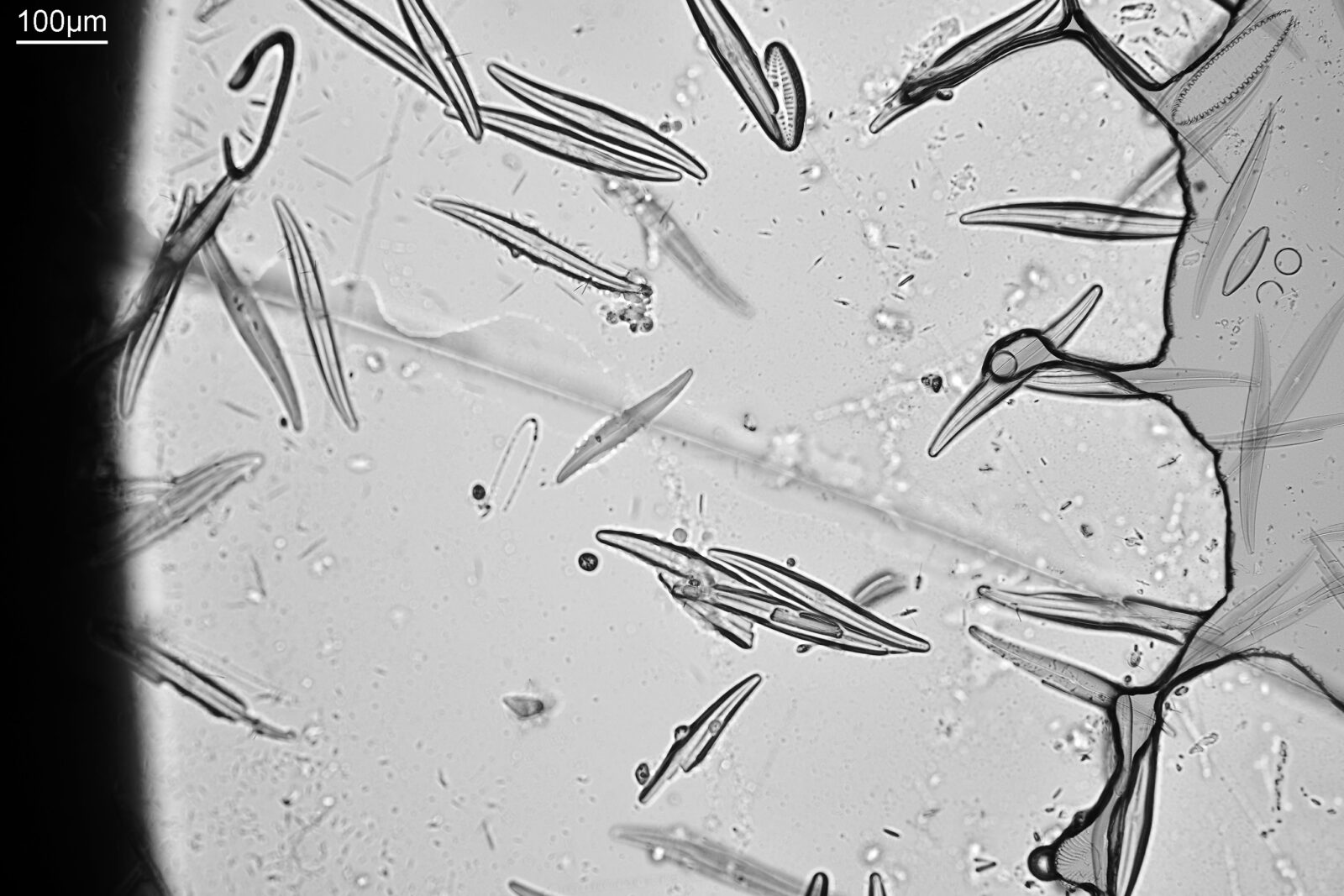
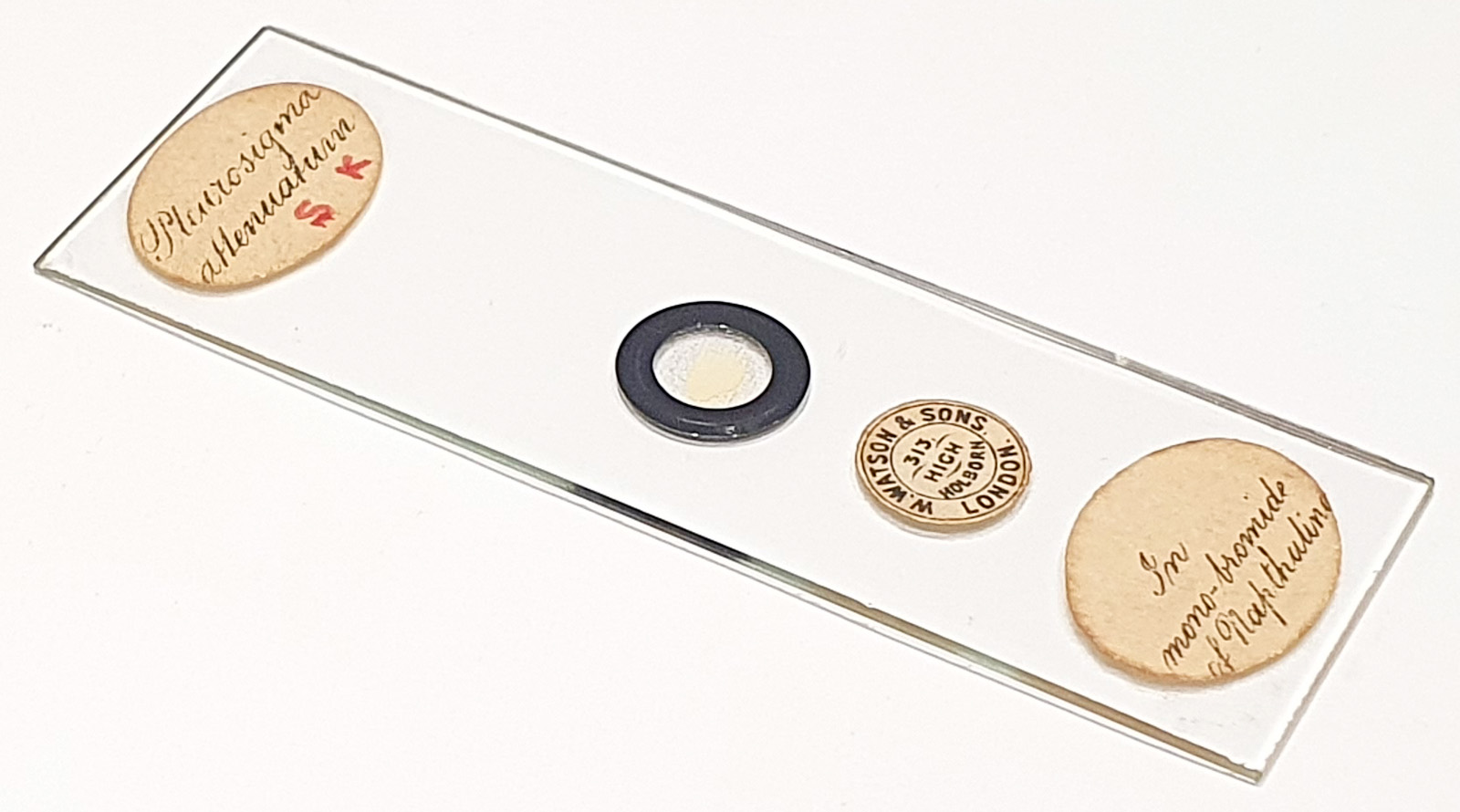
A strew slide of Pleurosigma attenuatum (with examples of other species also present). Also known as Gyrosigma attenuatum. Prepared by Watson and Sons Ltd. Mounted in mono-bromide of napthaline (monobromonaphthalene). The coverslip has damage in the middle – a three spoked crack where someone has wound an objective down into the slide. Some of the mountant has been lost especially towards the edge of the coverslip, however it is still good for imaging in the middle of the slide, presumably as the gaps between the coverslip and slide is smallest there due to the cracks. Olympus BHB microscope using 450nm LED light. 63x Leitz Pl Apo NA 1.40 objective, oil immersion. Olympus Aplanat Achromat condenser, oil immersion, brightfield lighting. 2.5x Nikon CF PL photoeyepiece. Monochrome converted Nikon d850 camera. 22 images stacked in Zerene (Pmax).
Monobromonaphthalene was used as a high refractive index mountant however it seems to have fallen out of favour relatively quickly and it is now rare to find a slide with it. It is reported to have a refractive index of 1.656-1.659 so is certainly high with respect to materials such a Canada Balsam (about 1.54) and Styrax (about 1.58), but with the advent of higher refractive index mountants such as Hyrax, Naphrax and Pleurax there would have been less of a need to use it. As can be seen with the images with the 10x and 20x objectives, there is a ‘granularity’ to the background, and there are also some needle like structures present. I suspect either something in the monobromonaphthalene has crystallized out or it has interacted with something else which has then crystallized or sedimented out. This is not visible in the 63x stacked imaged as I clean up the background for these high magnification stacks.
Slide donated by Nigel & Lisa Ashby.